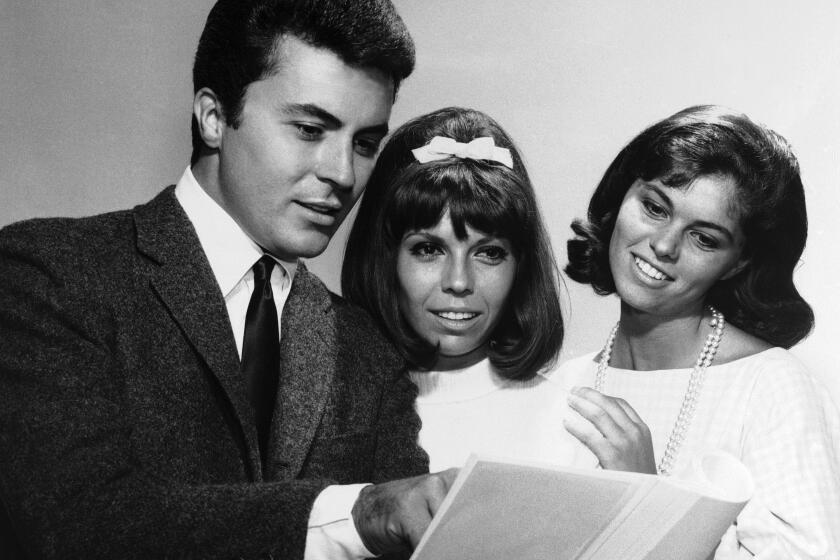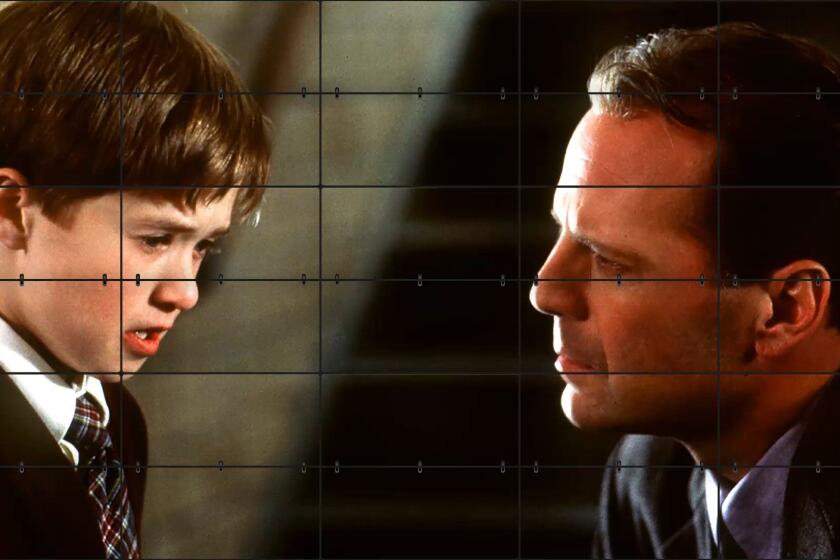Hollywood raises profile of ALS with two new films
Nanci Ryder has been Renée Zellweger’s publicist for 20 years. She stayed in the waiting room when the actress had dental surgery and has walked her down the red carpet on Oscar night.
“She’s been a mentor, a big sister — a little sister,” Zellweger says. “She’s my favorite bad influence.”
So when Ryder, 62, confided that she’d been having vocal trouble — hoarseness, slurring her words — Zellweger didn’t waver. After seven months of MRIs, PET scans and doctors visits proved inconclusive, the two flew in August to Massachusetts General Hospital in Boston, where the chief of neurology diagnosed Ryder with amyotrophic lateral sclerosis — ALS.
“Like a lot of people,” Zellweger recounts, “I was completely unaware of ALS until the Ice Bucket Challenge. I didn’t know that it leads to paralysis. I didn’t know there was no cure.”
She was referring, of course, to the slew of videos this summer of celebrities and others having icy water dumped on their heads to raise awareness about ALS. But while the videos prompted unprecedented donations — between July 29 and Sept. 15, the ALS Assn. raised $115 million, compared with $5.5 million over the same period last year — they gave no clue about the seriousness of the disease.
“It was traumatically frightening,” Zellweger says of the moment she realized what Ryder was facing.
Before the Ice Bucket Challenge, most Americans knew ALS as Lou Gehrig’s disease — a reference to the New York Yankees first baseman who first put a face to the illness when he was forced to quit baseball in 1939. The 1942 Gary Cooper weeper “The Pride of the Yankees” expanded awareness worldwide, but it didn’t fully depict the ravages of the disease.
This fall, however, two high-profile films, “The Theory of Everything” and “You’re Not You,” will tackle ALS head on. Moviegoers will get a fuller picture of how the illness affects the brain and spinal cord’s nerve cells, eventually shutting down muscle control and completely paralyzing sufferers while their minds almost always stay alert.
This has been the case for one of the most well-known sufferers of the sickness, theoretical physicist Stephen Hawking, who has lived for more than 50 years with the disease (most people with ALS have an average life expectancy of only two to five years).
Hawking’s struggle is the subject of “The Theory of Everything,” which has earned rave reviews since its debut in September at the Toronto International Film Festival. Its star, Eddie Redmayne, spent months figuring out how to physically portray Hawking, who is now in a wheelchair and uses a computer and speech synthesizer to communicate. The film will hit theaters Nov. 7, a month after the release of “You’re Not You,” a drama in which Hilary Swank plays a pianist who is diagnosed with ALS and strikes up an unlikely friendship with her college-age caregiver (Emmy Rossum).
“It couldn’t be better timing, that’s for sure,” says Carrie Munk, chief communications and marketing officer of the ALS Assn. “The Ice Bucket Challenge made people much more aware of ALS by helping to create a better understanding of the disease, but to see how it affects someone visually is a totally different thing.”
Some of the most memorable tear jerkers in film have centered on illness — AIDS in “Philadelphia,” Alzheimer’s in “The Notebook,” cancer in “The Fault in Our Stars.”
But not since “The Pride of the Yankees” has ALS been depicted in a major Hollywood movie. That’s at least partly because it’s relatively rare: ALS currently affects about 30,000 Americans, compared with more than 1 million living with HIV and more than 5 million with Alzheimer’s.
It’s also difficult to depict cinematically. Most patients, for instance, like Ryder, experience dramatic changes in their vocal ability.
“It’s a very difficult illness to render,” says James Marsh, director of “The Theory of Everything.” “It’s progressive. It’s not stable. You go from being physically able to totally incapacitated in slow increments. So to do that in a way that is convincing is very difficult.”
Redmayne, 32, spent four months before production began working with a dance coach to choreograph Hawking’s lack of movement. He had a voice coach too, to figure out how to make his voice crack accurately. He watched archival films and pored over the cosmologist’s 1965 wedding photos to see how Hawking was holding a pair of walking sticks.
And because the movie was not shot sequentially, Redmayne decided to create what Marsh described as a “comprehensive chart,” detailing different stages of Hawking’s illness and what his physical limitations would have been during each period.
Though Hawking was shown the script before production began — it was based on the book “Traveling to Infinity: My Life With Stephen” written by his ex-wife, Jane — he was not heavily involved in the making of the film. He lent Marsh a few props to use — including a medal he’d received from the queen of England — and allowed the use of his speech synthesizer’s actual voice.
“We had his blessing, which was what we wanted,” the filmmaker says. “And when we showed the movie to Stephen, he said he thought he was looking at himself, which is about the biggest compliment we could have received. There’s a great deal of humility when you shoot a film like this. Every day, we’d wake up grateful to be able-bodied. It changed all of our views of disability.”
Of course, Hawking’s story is an inspirational one — he has overcome the harrowing odds all while making major contributions to the scientific world, most famously with 1988’s “A Brief History of Time.” As both producer and star of “You’re Not You,” Swank found herself encountering resistance from financiers who were hesitant to back a movie about an ALS patient with a more dire outcome than Hawking’s.
“Everyone is like, ‘Oh, a disease movie. It’s not really uplifting,’” the actress, 40, says. “Any movie that deals with death is hard to get made, but I feel it’s our job as artists to portray life — and this is life. This is reality, and it’s becoming more prevalent.”
Swank has undergone major physical transformations on-screen before: as a transgender man in “Boys Don’t Cry,” then as a boxer who becomes a quadriplegic in “Million Dollar Baby.” (She won Oscars for each of those performances.) But she was entirely unfamiliar with ALS before making “You’re Not You,” so she worked alongside a nurse — and ALS patients — to navigate her character’s specific ailments.
“Many people with ALS were really lovely in sharing their stories, even up to the day some of them passed,” Swank says. “None of them said, ‘No. This is private.’ It was always, ‘Please. Let’s raise awareness. Use me in any way possible.’”
That’s been Ryder’s perspective too — a slightly unnatural one for her to adopt, given that her clients have always been the ones in the limelight. A Hollywood mainstay who has worked with Leonardo DiCaprio, Robert Downey Jr. and Sarah Jessica Parker, Ryder in August stepped down as one of the co-heads of BWR Public Relations, the firm she helped found nearly three decades ago. Last weekend, she embraced her new role as an advocate for ALS research, sporting a “Team Nanci” T-shirt alongside dozens of her colleagues at a charity walk to raise money for the disease. Zellweger, who raised $14,000, was there, as was close friend Reese Witherspoon.
“Renée and Reese are rare people,” Ryder says, opting to communicate via email due to vocal fatigue.
“I am so fortunate that they are standing by me, not in a symbolic way but as foot soldiers trying to drive the momentum that has come from the Ice Bucket Challenge.
“Of course, I am happy to share my personal experience with this disease, but it is still very hard and frightening to look ahead. I take so much solace from the example of Michael J. Fox, who has done wonders for the Parkinson’s community. He has never looked back and said, ‘Why me?’ So I guess I have come to a place of acceptance … why not me?”
Twitter: @AmyKinLA
More to Read
Only good movies
Get the Indie Focus newsletter, Mark Olsen's weekly guide to the world of cinema.
You may occasionally receive promotional content from the Los Angeles Times.











